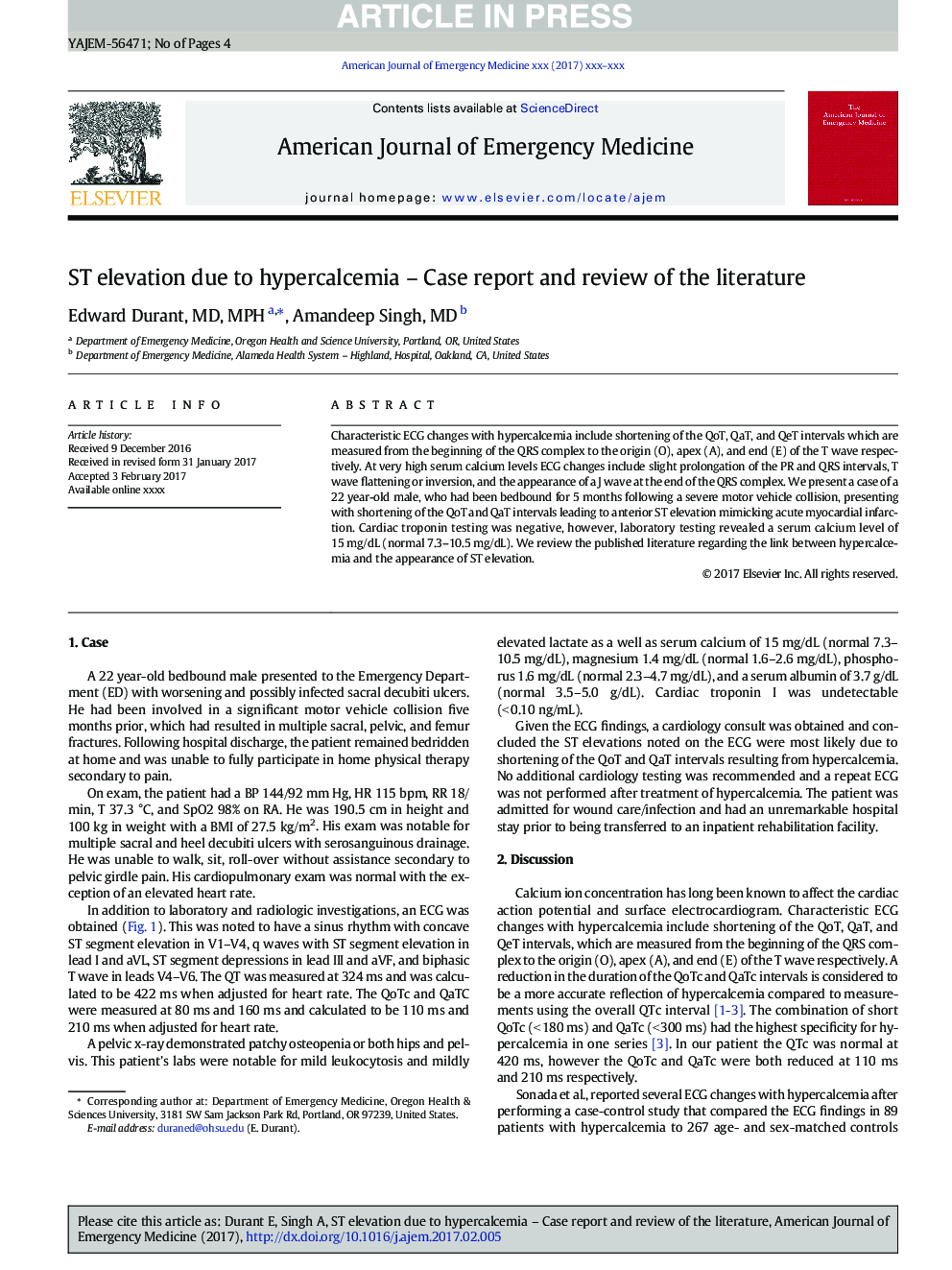| Article ID | Journal | Published Year | Pages | File Type |
|---|---|---|---|---|
| 5650524 | The American Journal of Emergency Medicine | 2017 | 4 Pages |
Abstract
Characteristic ECG changes with hypercalcemia include shortening of the QoT, QaT, and QeT intervals which are measured from the beginning of the QRS complex to the origin (O), apex (A), and end (E) of the T wave respectively. At very high serum calcium levels ECG changes include slight prolongation of the PR and QRS intervals, T wave flattening or inversion, and the appearance of a J wave at the end of the QRS complex. We present a case of a 22Â year-old male, who had been bedbound for 5Â months following a severe motor vehicle collision, presenting with shortening of the QoT and QaT intervals leading to anterior ST elevation mimicking acute myocardial infarction. Cardiac troponin testing was negative, however, laboratory testing revealed a serum calcium level of 15Â mg/dL (normal 7.3-10.5Â mg/dL). We review the published literature regarding the link between hypercalcemia and the appearance of ST elevation.
Related Topics
Health Sciences
Medicine and Dentistry
Emergency Medicine
Authors
Edward MD, MPH, Amandeep MD,
